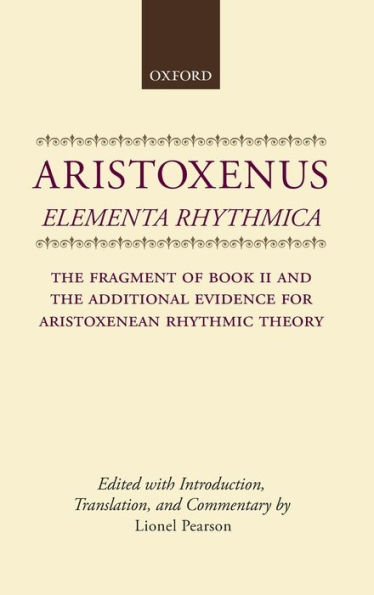Elementa Rhythmica: The Fragment of Book II and the Additional Evidence for Aristoxenean Rhythmic Theory
This is the first critical text in over a century of the surviving fragment of Arixtoxenus's Elementa Rhythmica. Pearson offers further evidence of Aristoxenian theory in extracts from later Greek musical writers and from the important papyrus fragment Oxyrhynchus Papyri 2687, which is also presented here with translation and commentary. Pearson demonstrates that Aristoxenus explains rhythm in terms that would be acceptable to musicians today, that he does not regard rhythm as "purely quantitative," and that rhythm as he understood it can be found in lyric poetry of the fifth century.
1139329768
Elementa Rhythmica: The Fragment of Book II and the Additional Evidence for Aristoxenean Rhythmic Theory
This is the first critical text in over a century of the surviving fragment of Arixtoxenus's Elementa Rhythmica. Pearson offers further evidence of Aristoxenian theory in extracts from later Greek musical writers and from the important papyrus fragment Oxyrhynchus Papyri 2687, which is also presented here with translation and commentary. Pearson demonstrates that Aristoxenus explains rhythm in terms that would be acceptable to musicians today, that he does not regard rhythm as "purely quantitative," and that rhythm as he understood it can be found in lyric poetry of the fifth century.
58.0
Out Of Stock
5
1

Elementa Rhythmica: The Fragment of Book II and the Additional Evidence for Aristoxenean Rhythmic Theory
156
Elementa Rhythmica: The Fragment of Book II and the Additional Evidence for Aristoxenean Rhythmic Theory
156
58.0
Out Of Stock

Product Details
| ISBN-13: | 9780198140511 |
|---|---|
| Publisher: | Oxford University Press |
| Publication date: | 04/19/1990 |
| Pages: | 156 |
| Product dimensions: | 5.69(w) x 8.81(h) x 0.59(d) |
From the B&N Reads Blog
